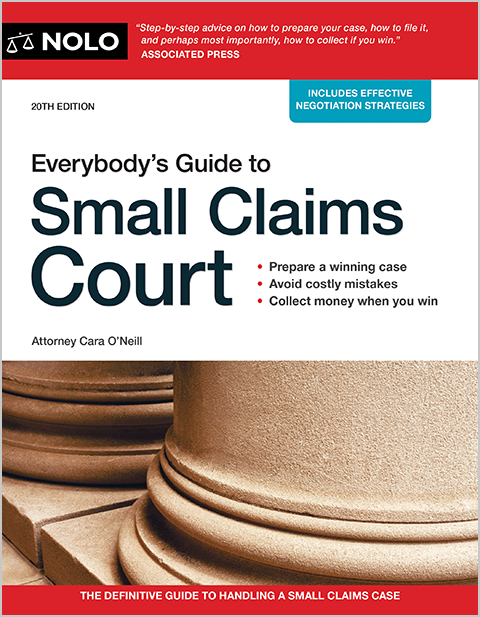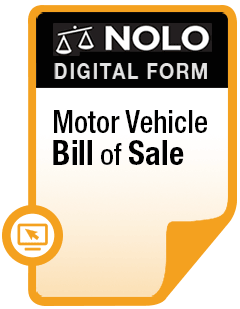Learn about the District’s unique no-fault insurance system, minimum auto insurance requirements, and penalties for driving without insurance.
If you own or operate a motor vehicle in the District of Columbia, you're subject to the District's mandatory auto insurance rules, which require:
- liability car insurance coverage of $25,000 bodily injury coverage per person, $50,000 total bodily injury coverage per accident, and $10,000 property damage coverage per accident; plus
- uninsured motorist coverage of $25,000 bodily injury coverage per person, $50,000 total bodily injury coverage per accident, and $5,000 property damage coverage per accident.
There's also a key wrinkle that lets you choose no-fault car insurance coverage after a car accident in D.C. Let's take a closer look.
Does Washington D.C. Have No-Fault Car Insurance?
Let's start by explaining that every state has adopted one of these three kinds of auto insurance systems:
- a fault-based system
- a no-fault system, or
- a hybrid "choice" system.
Under a traditional fault-based system, if you're hurt in a car accident, the party who caused your injuries is on the financial hook for your losses. You can file an insurance claim or a lawsuit against them driver who caused your injuries. Under no-fault insurance, if you're injured in an auto accident, as a rule, you must first file a claim against your own auto insurance. Specifically, your "personal injury protection (PIP)" insurance covers your medical bills and lost wages up to the limits of your coverage, no matter who caused the crash.
A few states let you choose between fault-based or no-fault coverage. Typically, state law presumes that you want fault-based coverage but you can choose no-fault coverage instead. Once you've made your choice, though, you're stuck with it—at least until the time comes to renew your insurance coverage.
So, what about D.C.?
D.C.'s No-Fault System Is Unique
The District has what looks like a "choice" system: Your auto insurer must sell you a policy with the minimum required fault-based coverages (outlined at the top of this article), but also must offer you the option to buy no-fault PIP coverage, too. (D.C. Code § 31-2404(a)(1).)
Here's where D.C.'s system is unique. If you bought PIP coverage and you're hurt in an accident, you've got 60 days from the date of the accident to elect to collect no-fault benefits instead of bringing a claim against the at-fault driver. (D.C. Code § 31-2405(a).)
If you choose the no-fault option after a crash, you can't file a claim or lawsuit against the at-fault driver (meaning you can't collect damages for injuries like pain and suffering and emotional distress) unless your injuries meet D.C.'s severity thresholds. To meet these thresholds:
- your medical bills must exceed your PIP coverage limit, or
- your injuries must result in substantial permanent scarring or disfigurement, or a qualifying impairment as described in the law.
(D.C. Code § 31-2405(b).)
Finally, note that D.C.'s no-fault rules only apply to personal injuries, not to vehicle damage claims.
When Do I Need Car Insurance in Washington D.C.?
You're required to maintain motor vehicle insurance that meets the requirements of D.C. law if:
- you own a motor vehicle that must be registered in D.C.
- you own a motor vehicle that requires a D.C. "reciprocity sticker," or
- you live outside the District but drive a motor vehicle (or allow someone else to drive your motor vehicle) in the District.
(D.C. Code § 31-2403(a-b).)
What Does Liability Car Insurance Cover in D.C.?
Liability insurance is the coverage that pays someone else's damages (like medical bills, lost wages, pain and suffering, and more) if you cause an auto accident. If the injured party doesn't have their own PIP coverage (or if they elect not to use it—see above), your liability coverage will pay for their losses, up to the limits of your coverage.
A note on the minimum liability coverage listed at the top of this article: If you cause an accident that results in serious injuries, the injured person can pursue you personally for all their damages. If you only carry the legally-mandated minimum coverage, you could be forced to pay damages in excess of your coverage limits out of your own pocket.
How Does Uninsured Motorist Coverage Work in D.C.?
As the name suggests, uninsured motorist (UM) coverage will pay your damages if you're hurt by a driver who has no auto insurance. Ask your insurance agent if the District's minimum requirements are enough to meet your needs.
What Car Insurance Is Optional in D.C.?
As mentioned above, D.C. law requires that your auto insurer offer you PIP coverage.
In addition, except for motorcycles or other motorized cycles, your insurer must offer you underinsured motorist coverage (UIM). This insurance pays the difference between your total damages and the limits of the at-fault driver's liability insurance coverage. The insurance company must offer you this coverage in the same amounts as are required for UM coverage. (D.C. Code § 31-2406(c-1).)
How Do I Show Proof of Car Insurance in D.C.?
When you're required to show proof of insurance coverage, you can do so with:
- a paper insurance certificate, or
- an electronic version of the certificate. (D.C. Code § 31-2413(a-2)(1).)
Options for Making a Claim After an Accident
Your options for filing a claim after an auto accident will depend on the choices you make when you buy your auto insurance.
If You Buy Optional PIP Coverage
When you've got PIP coverage, you have 60 days after an auto accident to choose between:
- filing a claim for PIP benefits, or
- filing a claim against the at-fault driver's liability insurance.
PIP Benefits Claim
The advantage of making a claim for PIP benefits is that you'll almost certainly get paid faster. The benefits you're eligible for will depend on the coverage you purchased. When you buy PIP coverage, D.C. law lets you choose between some or all of these benefits:
- medical coverage
- lost wages, and
- funeral expenses.
As mentioned above, PIP coverage won't compensate you for injuries like pain and suffering, emotional distress, or disability and disfigurement. If you want compensation for those damages, you'll have to file a claim against the at-fault driver.
Claim Against At-Fault Driver
Under D.C. law, if you've purchased optional PIP coverage, there are two ways you can pursue a claim against an at-fault driver:
- If you elected to bring a PIP claim, you can later bring a third-party claim (meaning a claim against the at-fault driver's liability insurance) only if you satisfy at least one of the District's severe injury thresholds, or
- If you didn't elect to bring a PIP claim, D.C. law treats you as having elected to bring a third-party claim. (D.C. Code § 31-2405 (g).
If You Didn't Buy Optional PIP Coverage
When you don't buy PIP coverage, your only option is to pursue a third-party claim against the at-fault driver. Typically, you'll start by filing an insurance claim and negotiating with the driver's insurance company. If you're unable to reach a settlement, you can file a car accident lawsuit in court.
Penalties for Driving Without Insurance in D.C.
You can be hit with several penalties if you fail to maintain the required insurance on a motor vehicle.
The Director of the D.C. Department of Motor Vehicles (DMV) "shall suspend" your motor vehicle registration (or your reciprocity sticker) if you don't keep the vehicle insured as required by law. The suspension remains in effect until you provide proof of insurance and pay "a reinstatement fee and the applicable fine." (D.C. Code § 31-2403(d)(2)(A).)
Additionally, on suspension of your registration, the DMV or the police are authorized to immobilize your vehicle and recover your registration certificate and your vehicle tags. (D.C. Code § 31-2403(d)(2)(B-C).)
This table lists several violations of D.C.'s mandatory insurance law described in D.C. Code § 31-2413, and the penalties accompanying those violations:
|
Section |
Violation |
Penalty |
|
2413(a)(1) |
False material statement regarding compliance with the law |
30 days in jail for first offense; 90 days for second and subsequent offenses |
|
2413(a)(2) |
Owner who fails to maintain required insurance |
Penalties in § 31-2403(d)(2) plus $150 fine for first 30 days; fine then increases per day to maximum of $2,500 total |
|
2413(a)(3) |
Owner who allows vehicle to be driven without required insurance |
Penalties in § 31-2403(d)(2) plus fine of $500 or 30 days' license suspension (or both) for first offense; fines and suspension can increase for later offenses |
|
2413(a)(5) |
Driving with suspended registration or reciprocity sticker |
30 days in jail for first offense; 90 days for second and subsequent offenses |
|
2413(a)(6) |
Failure to surrender registration, reciprocity sticker, or tags to DMV or police |
30 days in jail for first offense; 90 days for second and subsequent offenses |
|
2413(a)(7) |
Failure to produce proof of insurance |
Penalties in § 31-2403(d)(2) plus fine of $500 |
Learn more about car accident laws in D.C. And for legal information that's tailored to your situation, learn how a lawyer can help with a car accident claim.



